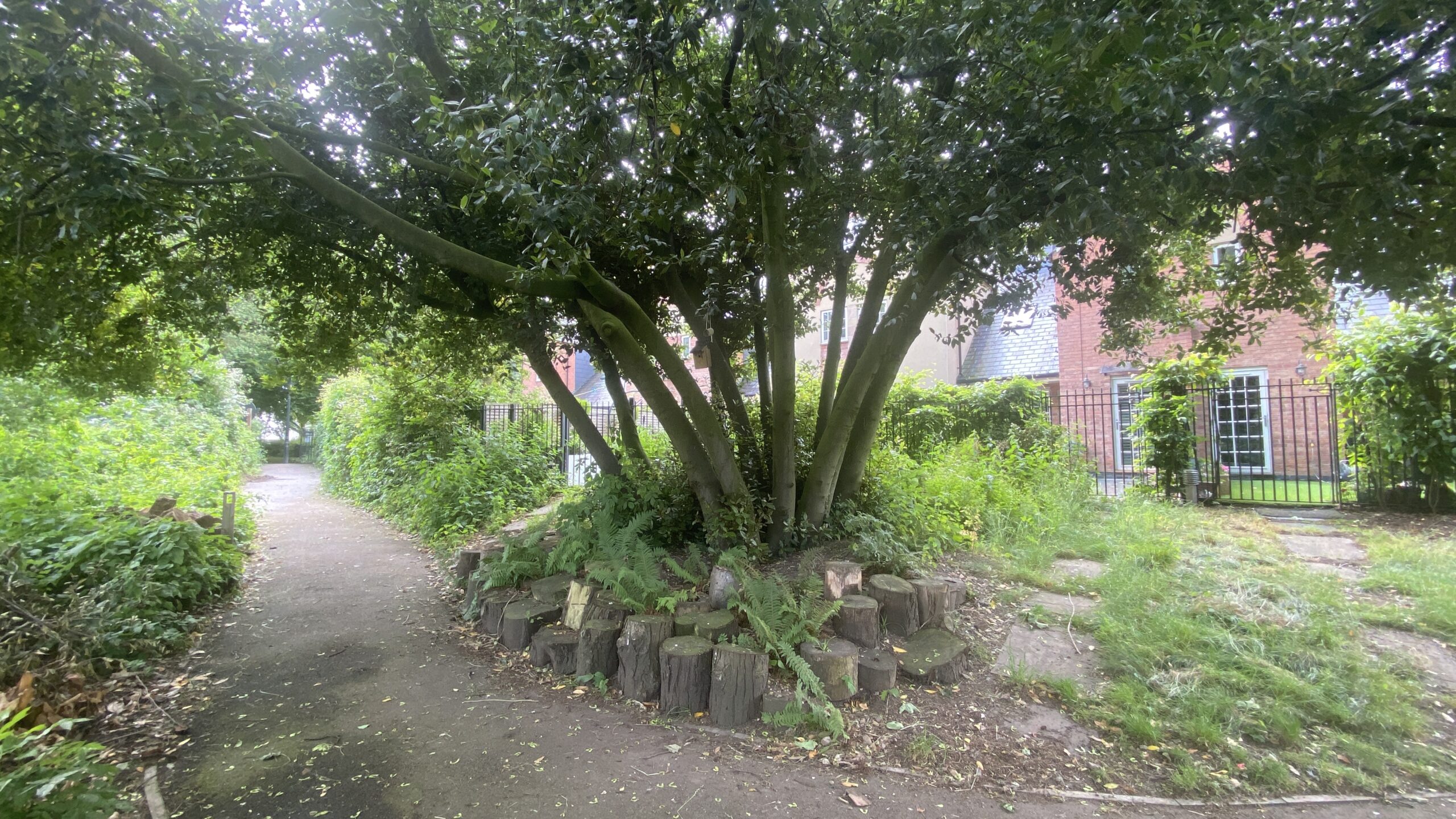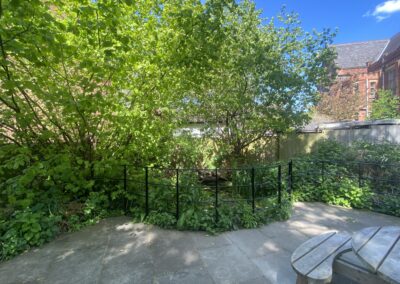Fernery
Fernery

Our small fernery is built with logs and rocks around the base of an established Bay tree, a shady spot where most plants don’t grow too well.
It hosts a variety of native and naturalized fern species. Among the most common are the Male Fern (Dryopteris filix-mas), known for its robust fronds and tolerance to different soil types, and the Lady Fern (Athyrium filix-femina), which has delicate, lacy fronds and thrives in moist, shaded areas. Another typical species is the Hart’s-tongue Fern (Asplenium scolopendrium), recognizable by its undivided, tongue-shaped fronds. The Polypody Fern (Polypodium vulgare), with its leathery fronds, often grows on rocky outcrops or as an epiphyte on trees.
Ferns play a significant role in promoting ecological diversity and sustainability. They provide a habitat for a range of animals and insects, contributing to a balanced ecosystem. The dense fronds of ferns offer shelter and breeding grounds for small animals and insects. Additionally, ferns contribute to soil health by preventing erosion with their extensive root systems and adding organic matter as their fronds decay.
Insects like beetles and ants thrive in the moist, shaded environment that ferns create. Birds and small mammals, such as hedgehogs, often forage in these areas, seeking insects and other food sources. Ferns and nettles also offer habitat to specific butterfly species, such as the Small Tortoiseshell and the Red Admiral, whose larvae feed on nettles. The presence of these plants supports the life cycles of these butterflies, contributing to their conservation.
Creating a fernery promotes ecological diversity by supporting a range of species, from insects to mammals. This diversity strengthens the ecosystem, making it more resilient to environmental changes. From a sustainability perspective, ferns and nettles require minimal maintenance and thrive without chemical fertilizers or pesticides, reducing the garden’s environmental footprint.









